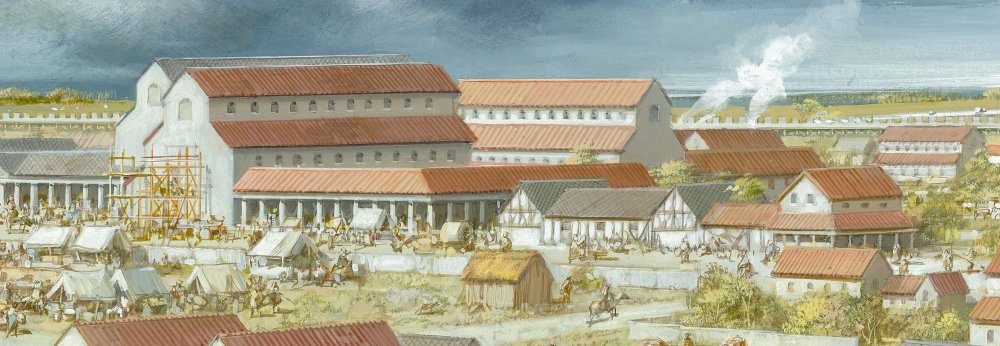
University of Leicester Archaeological Services are currently excavating the site of the former Stibbe factory, between Great Central Street and Highcross Street in central Leicester. The land is owned by Charles Street Buildings group, which has made the site available and financially supported the archaeological excavation ahead of a major planned development of the site.
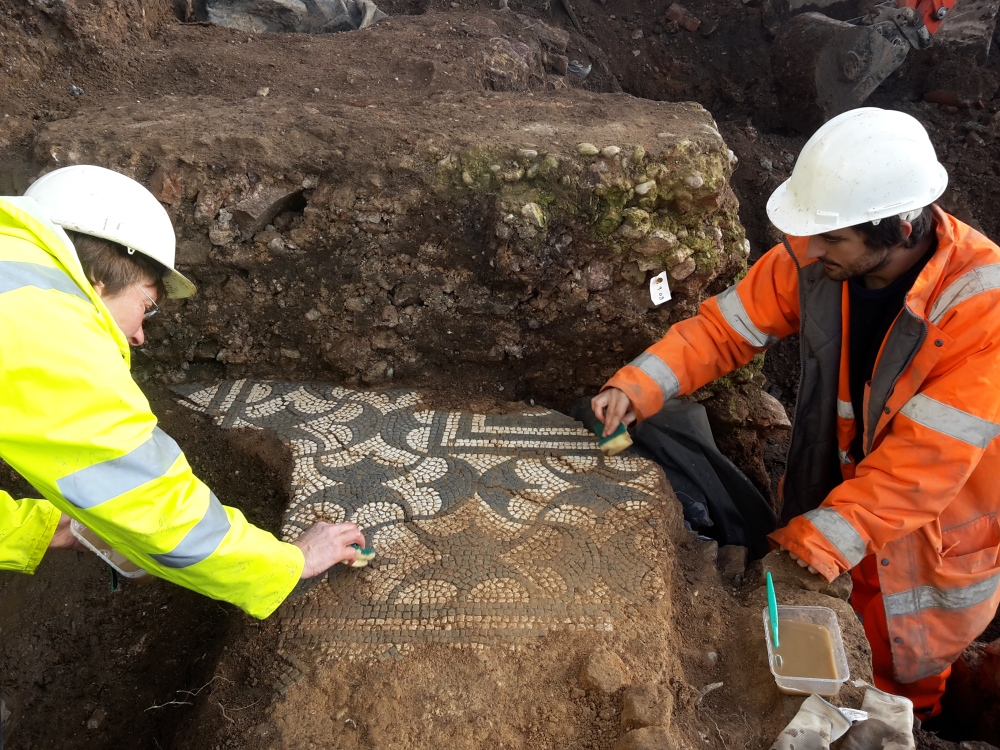
Key discoveries include the remains of one of the largest and highest-status Roman mosaic floors ever found in the city, two Roman streets containing a number of buildings and rare evidence of the first Anglo-Saxon migrants to arrive in the city following the demise of Roman Leicester. The site is close to another excavation recently carried out by ULAS, previously reported on, where fragments of further mosaic floors were discovered.
On Saturday 6 May, members of the public will be invited to visit the excavation site from 10-4pm and from 11-3pm on Sunday 7 May, with guided tours from the archaeologists every 30 minutes. A selection of the rare finds and artefacts found during the dig will also be on display alongside information boards to provide a glimpse into what Roman life in Leicester was like over 1,500 years ago.
The site lies over parts of three Roman insulae (city blocks) to the north of the town’s forum (beneath Jubliee Square), macellum or market place (beneath the Travelodge), and public baths (the Jewry Wall site). Since the excavation began in September 2016, the team has uncovered two Roman streets – one east-west and the other north-south, as well as two large high-status Roman houses with evidence for a number of rooms, some of which contain mosaics of varying patterns and designs, as well as a series of roadside structures, and early timber buildings.
In a room in one of the townhouses, the team discovered the largest and finest-quality mosaic found in over 150 years in Leicester, made with small cubes of stone and tile (tesserae) throughout (check out the 3D model above!). The mosaic is in a room with underfloor heating (hypocaust), probably the principal reception room of a major Roman town house on one of the main streets through Roman Leicester. Its design is composed of complex geometric patterns extending for a length of 10 metres. These include borders composed of four intertwined strands, known a guilloche, together with shield (peltae) and Greek key (meander) patterns. Expert opinion is that this mosaic floor is similar in quality and workmanship to the Blackfriars and Peacock pavements found in the 19th century (currently on display in the Jewry Wall museum).







Vast quantities of pottery, coins, brooches, beads, hair pins, gaming pieces and manicure objects have been found as well as an exceptionally decorated knife handle cast in copper alloy, which seemingly depicts a scene showing victims thrown to the lions in the amphitheatre.
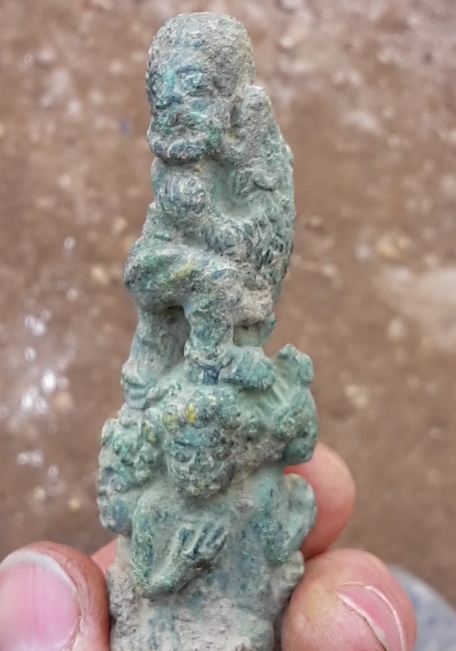
Elsewhere on site, a series of smaller roadside Roman structures have been discovered – presumably shops or small houses. One building was rectangular with an apse at one end and contained a grey tessellated pavement with red border. An attached adjacent well was constructed of stone, vast quantities of over-fired tile (including a fused stack of roof tile) and broken pieces of quern stone. The function of the apse building is uncertain, but the team speculate that it could be a temple, or Late Roman church?
The team has now begun investigating the well-preserved north-south Roman street which extends over 50 metres across the site and have found evidence for possible Anglo-Saxon timber structures built close to a Roman building and overlying the street surface. This relates to the period following the end of Roman Leicester, when Anglo-Saxon migrants arrived from the continent and settled in the ruins of the Roman town in the 5th and 6th centuries AD.





Richard Buckley, Co-Director of ULAS said: “The excavation has given us a rare and exciting opportunity to explore quite a large part of Roman Leicester – Ratae Corieltavorum – revealing evidence for the homes of some of its wealthier citizens who lived just a short walk away from both the town’s baths (at Jewry Wall) and forum (beneath what is now Jubilee Square).
“Despite huge disturbance from modern buildings of the 20th century, evidence for Roman streets has survived together with fragments of some spectacular coloured mosaic pavements which the public will be able to see from a specially constructed platform over the weekend of the 6th and 7th May. We very grateful indeed for the support from Charles Street Buildings for the project, both for the funding and for making public access possible.”
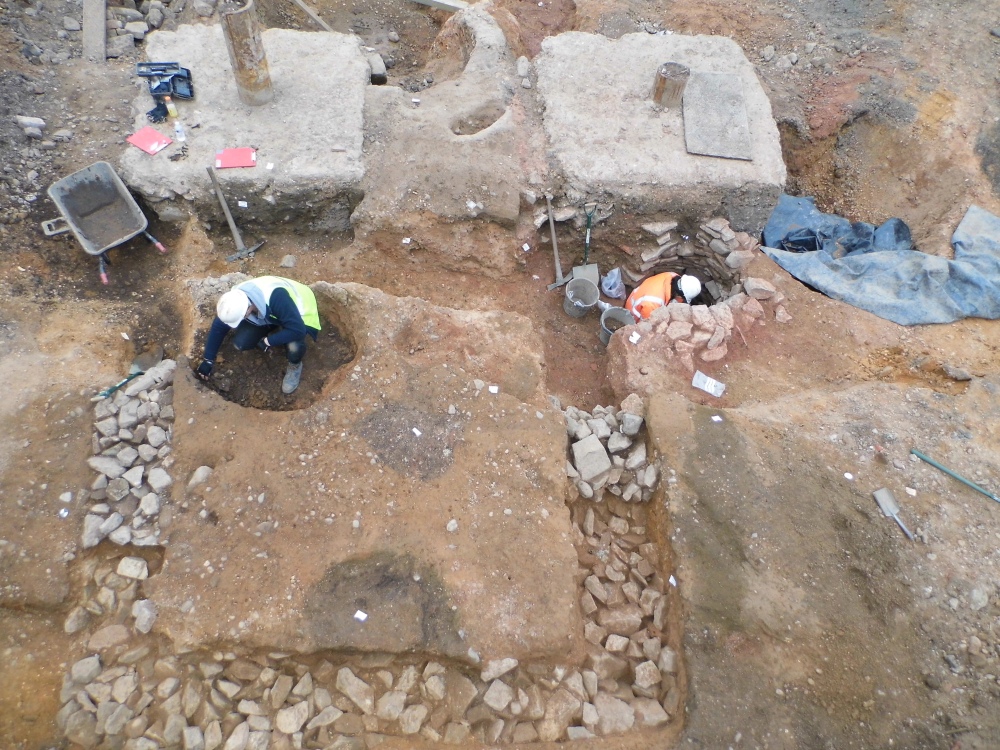
City Mayor Peter Soulsby said: “This part of the city would have been at the very heart of Roman Leicester, and it continues to provide further fascinating evidence of this important part of our local history.
“With the support of Charles Street Buildings, Richard Buckley and his team have demonstrated once again their uncanny knack of unearthing some truly remarkable amazing chapters in the Story of Leicester.”
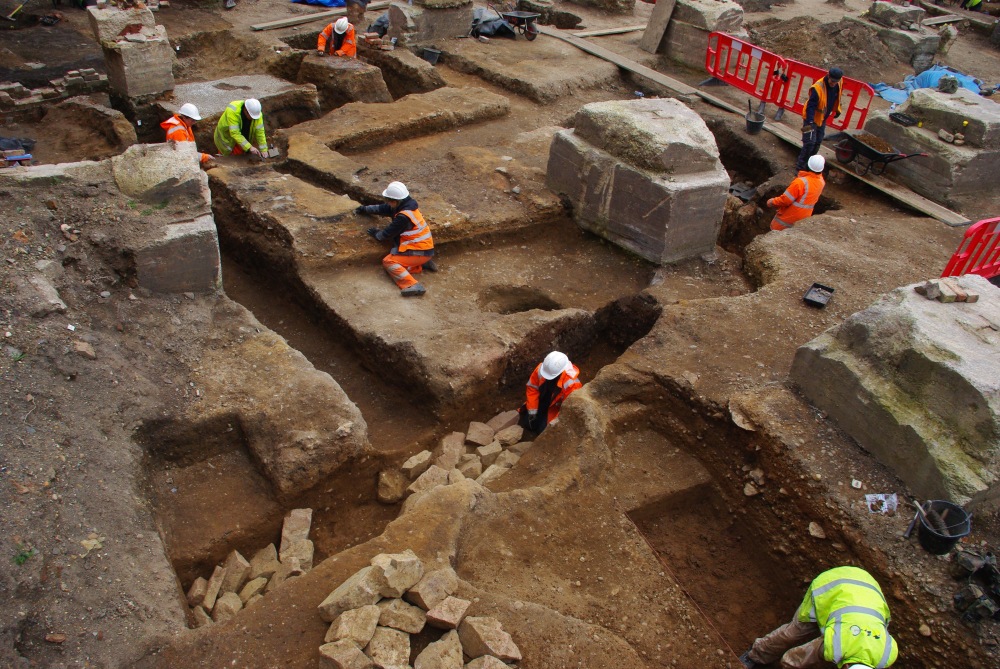
Professor Iain Gillespie, Pro-Vice-Chancellor for Research and Enterprise at the University of Leicester said: “This find reminds us of how important our city has been and continues to be in the constantly evolving history of this country. I am delighted that University of Leicester scholars, in partnership with the City and local business, have had the opportunity to shine a light on our rich heritage as we build our future in Leicester together.”
Joseph Murphy, Charles Street Buildings director, said: “ULAS has made some very exciting discoveries during this excavation, and we are delighted to be able to open up our site for people to come along and view these finds for themselves.
“We are now looking forward to progressing our ambitious development plans for this important site. This includes the creation of two new 4-star hotels and one of the largest local office developments in the last 20 years, along with a major refurbishment to bring new life to the historic former Great Central Station building.”
The excavation will be open to the public on Saturday 6 May, from 10am to 4pm and Sunday 7 May, from 11am to 3pm. Entrance to the site is via Great Central Street. There is wheelchair access.
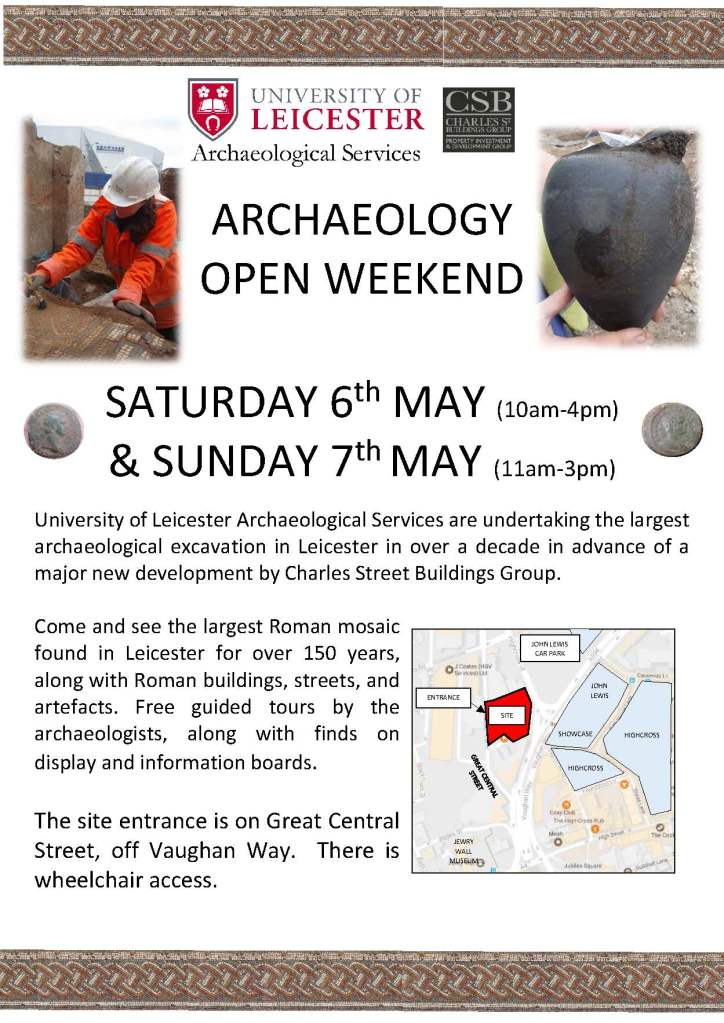
Congratulations – keep up the good work!
Steve
________________________________
I have been living in Australia for 50 years but Leicester will always be my hometown.
I take great delight in historical finds and watching ULAS at work on them.
I am spitting chips that I won’t be back in UK until June and will miss out on seeing the dig site. Keep up the excellent work and posting lots of photos and reports.
It’s a shame something like this can’t be left open for future generations.
Like the Jorvik Viking centre in York
We can’t argue that it would be nice to have more archaeology on display. However, in most instance what we are excavating is too fragile to leave open. If the archaeology is not under threat from development, the best policy usually is to rebury it to protect it for future generations.
The article mentions a hotel and offices being constructed. The public will have two days to see this.
Any details available please about what will happen to these artifacts after that? Will they be preserved somewhere or concrete simply poured on top? These details would be nice to know!
The archaeological excavation is being opened to the public for the weekend of 6-7 May. Construction of the hotel has not started yet. Any archaeology left on site once our archaeologists have finished will be re-buried beneath the new buildings and preserved for future generations. Once analysis of our discoveries is finished, artefacts will go on display the Jewry Wall museum. We may have some of our discoveries on temporary display at events over the summer too.
Will this event be accessible by wheelchair?
Yes the event is accessible for wheelchairs.
Following your positive reply, we brought my elderly mother down, in her wheelchair – sadly she is not fit enough to contemplate an hour or more in the queue. Next time, could you consider booked timeslots?
We’re sorry to hear that, we were overwhelmed by the public interest in the project. It is certainly something we will consider in the future. In the meantime the site team are going to be giving lunchtime tours all week Monday 8th to Friday 12th May, 12pm – 2pm.
Thank you – we were able to book a timeslot on Saturday and we all greatly enjoyed the tour and seeing the finds. Many thanks to the staff involved.
A bit off-subject but I would love to know why the River Leire’s name (as it was in Roman times) was changed to the River Soar, and why. Or perhaps Leicester should now be re-named Soarcester! (I don’t think so!)
Current thinking is that Leicester means ‘Roman site of the Ligore’, Ligore being the name of a group of people living in the vicinity. Whether this derives from a pre-English river-name or not is unknown, and whether it is an old name for the River Soar or not is also unknown. Sadly, we will probably never know the truth.
Will the site be open again? The queues today were enormous and we didn’t get in. Very disappointed.
Due to the overwhelming demand, the site will be open all week, Monday to Friday 12pm – 2pm.
My daughter and I feel really privileged to have had the chance to visit today, it was so inspiring to see the mosaics in place and imagine the excitement of uncovering them! Thank you to all involved in the open days. What an amazing response, too!
Is there no way the building contractors could be persuaded to incorporate the site into the basement of their hotel complex as has been done in hotels and office buildings in Malta and Germany? Great tourist attractions for tourists and locals alike
Thank You! We went today at lunchtime, and it was worth the wait. Really nice to be taken round by your staff and told about the dig and the finds, as well as seeing some in situ on site.